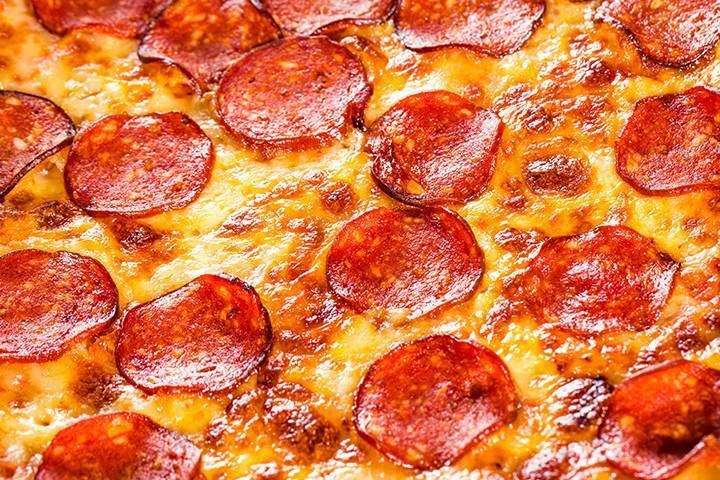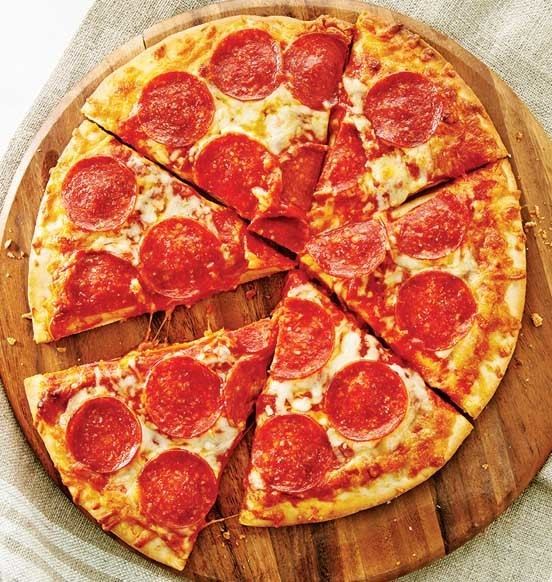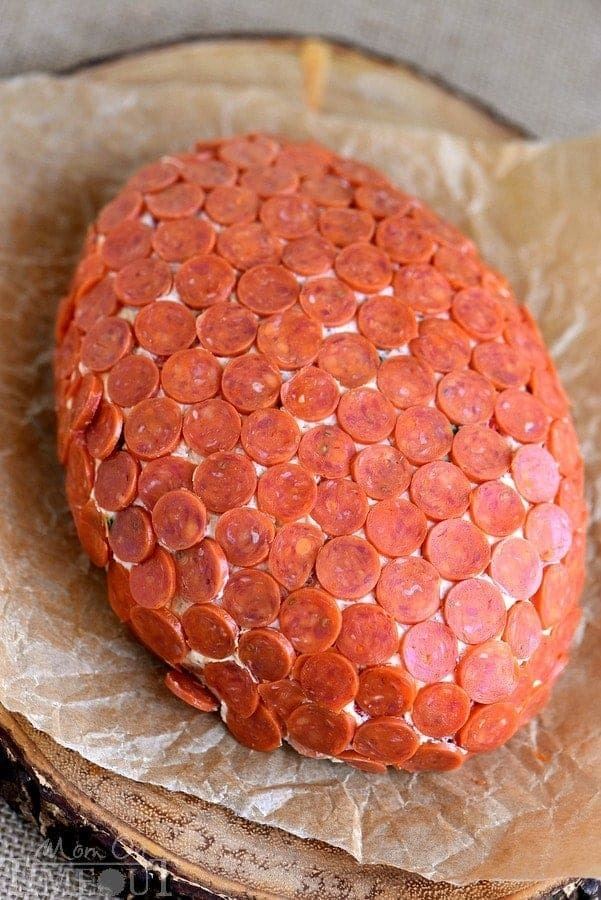Place of origin United States Protein 20.35 g Carbohydrate 4 g | Food energy
(per 100 g serving) 460 kcal (1926 kJ) Fat 40.2 g | |
 | ||
Nutritional value
(per 100 g serving) Protein
20.35 g
Fat
40.2 g
Carbohydrate
4 g Similar Salami, Mozzarella, Pizza, Calzone, Jalapeño | ||
Homemade pepperoni
Pepperoni, (also known as pepperoni sausage), is an American variety of salami, usually made from cured pork and beef mixed together.
Contents
- Homemade pepperoni
- Make your own pepperoni pizza
- Etymology
- History
- Production
- Varieties
- Use on pizza
- References

Pepperoni is characteristically soft, slightly smoky, and bright red in color. Thinly sliced pepperoni is a popular pizza topping in American-style pizzerias and is used as filling in the West Virginia pepperoni roll. It is also used to make some varieties of submarine sandwiches.

Make your own pepperoni pizza
Etymology

The term "pepperoni" is a borrowing of peperoni, the plural of peperone, the Italian word for bell pepper. The first use of "pepperoni" to refer to a sausage dates to 1919.

Even if in Italian the word is plural (like the Italian word salami, plural of salame), the English word pepperoni is used as a singular uncountable noun.
In Italian, the word peperoncino (diminutive of peperone) only refers to hot and spicy peppers, or sometimes to small, sweet kinds, while peperoni refers only to sweet peppers, such as bell peppers.
History
Pepperoni is a cured dry sausage similar to the spicy salamis of southern Italy, such as salsiccia Napoletana piccante, a spicy dry sausage from Naples, or the soppressata from Calabria. The main differences are that pepperoni has a finer grain (akin to salami of Milan, a spiceless regional variant of salami), is usually softer, and is produced with the use of an artificial casing (instead Italian salami are produced using natural gut for casing). Pepperoni is mass-produced to meet the demand for the sausage.
Production
Pepperoni is usually made from a mixture of pork and beef; halāl pepperoni is all beef. Turkey meat is also commonly used as a substitute, but the use of poultry in pepperoni must be appropriately labeled in the United States. In the Caribbean Islands and other parts of the world, donkey and horse meat are common ingredients.
Curing, with nitrates and/or nitrites (usually used in modern curing agents, to protect against botulism and other forms of microbiological decay) also contributes (though those compounds are quite neutral in hue) to pepperoni's reddish colour, by reacting with heme in the myoglobin of the proteinaceous components of the meat.
Pepperoni sausages are commonly sold in two sizes: an inch or so in diameter for pizza and two to three inches in diameter for sandwiches. Pepperoni is sold whole, chopped, or in slices, and is commonly found in American deli counters.
Varieties
Ingredients such as peppers, garlic, fennel, or mustard seeds can be included in the production of pepperoni to provide different flavors and levels of spiciness. Likewise, the type of meat used to produce pepperoni can vary. Pepperoni may be substituted by similar cured meats like Genoa salami, soppressata, or chorizo.
Pepperoni has a tendency to curl up from the edges in the heat of a pizza oven. Some pepperoni is produced in thicker slices, so that the edges curl intentionally.
Use on pizza
According to Convenience Store Decisions, Americans annually consume 251.7 million pounds of pepperoni on 36% of all pizzas produced nationally.
Pepperoni can also be found accompanying different types of cheeses as a cheap snack food in Canadian and some American convenience stores or gas stations. The portions of pepperoni and cheese are typically at equal lengths for ease of consumption, although it is not unusual to find packages containing small, bite sized pieces of pepperoni and cheese in many super markets across either country.
